What does it take to build the world’s largest offshore wind farm?
Hornsea 2, the world’s biggest offshore wind farm, is fully up and running.
Its 165 turbines will have a total capacity of 1.3 GW – that’s enough to power over 1.4 million UK homes with clean, renewable electricity.
But completing the pioneering project about 90 kilometres off the Yorkshire coast in the middle of a global pandemic was no easy feat.
The Herculean task required visionary leadership, perseverance, and incredible teamwork.
Hornsea 2: The world's largest wind farm
- 165 wind turbines
- 1.32 GW of clean energy
- 1.4 million homes powered
Series of firsts
When we initially set out to build Hornsea 2 in 2017, people said it was impossible.
The UK government awarded us a Contract for Difference (CfD) to build the offshore wind farm for what was the lowest price ever at that time.
At GBP 57.50/ MWh, the strike price was 50% lower than the previous round of CfD allocations just two years earlier.
When people saw that price, they said the business case was impossible and simply could not done.
From that moment, we knew we were trailblazers who were setting out to transform our industry. We knew we needed to set our vision and values if we were to achieve our goal.
Facts
- 1 turbine rotation
- Generates enough electricity to power a home for 24 hours
- 204 meters
- Height of each wind turbine
- 89km
- Furthest offshore wind farm in UK waters
- 380 km of export cables
- Same distance as Grimsby to Amsterdam
Our mission
From the start, the mission was clear: To build the world’s biggest and best value offshore wind farm, as well as to leave a legacy of enriched and injury free people.
At Ørsted, health and safety always come first. That’s part of our DNA.
But with Hornsea 2, we wanted to do more than that. We wanted the 8,000 people working on this project – from Ørsted employees to contractors around the world – to leave feeling professionally enriched.
How do you achieve that? Plan, care, communicate.
From that baseline, we created high performing teams by empowering, engaging and encouraging individual leadership at every level.
With that structure in place, we were ready to face any challenges that came our way – and there were many!
Images of Hornsea 2
Scroll to view images from our Hornsea 2 photography exhibition, Building the world’s biggest offshore wind farm.
Download the event guidebook here
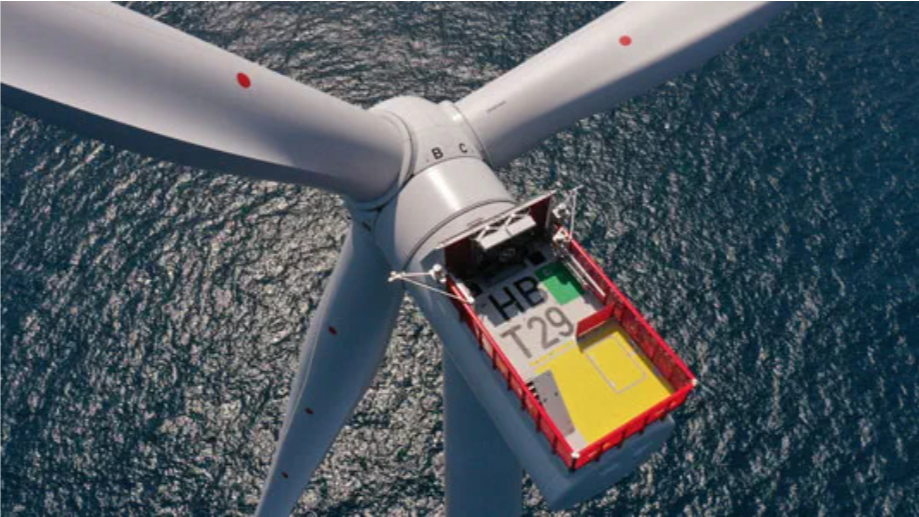 Ørsted’s 1000th turbine installed in UK waters on Hornsea 2, June 2021.
Ørsted’s 1000th turbine installed in UK waters on Hornsea 2, June 2021.
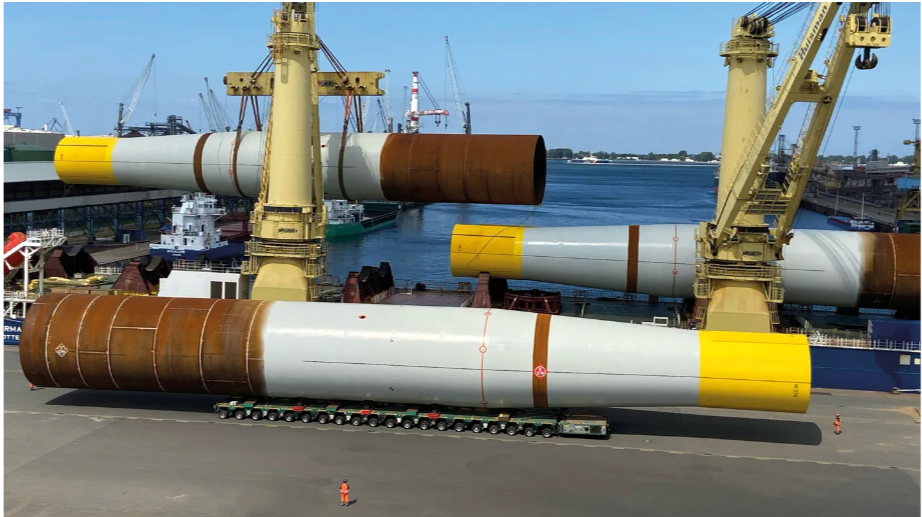 Monopiles are offloaded from the delivery vessel for storage, before being transferred to the installation vessel. Hornsea 2’s monopiles are between 60m and 78m long (varying because of different sea depths).
Monopiles are offloaded from the delivery vessel for storage, before being transferred to the installation vessel. Hornsea 2’s monopiles are between 60m and 78m long (varying because of different sea depths).
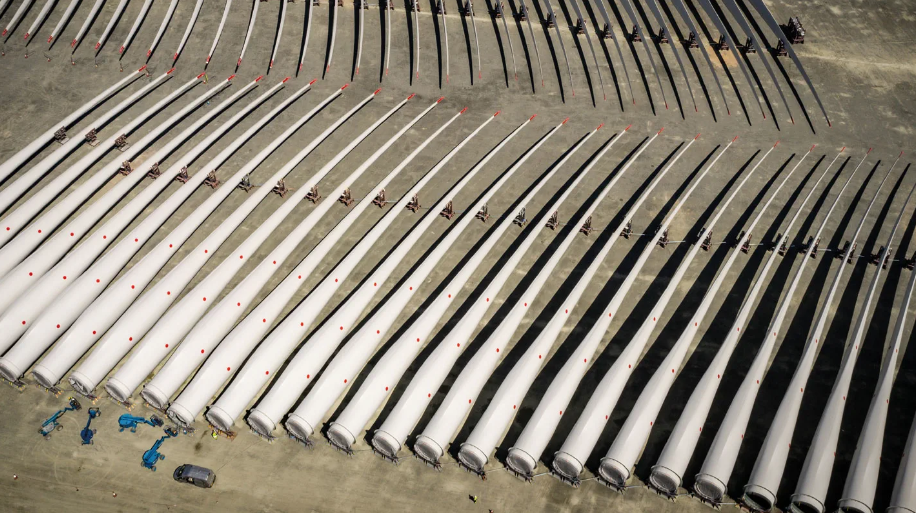 Blades at Siemens Gamesa Renewable Energy’s (SGRE) blade manufacturing facility in Hull, currently the largest offshore wind manufacturing facility in the UK.
Blades at Siemens Gamesa Renewable Energy’s (SGRE) blade manufacturing facility in Hull, currently the largest offshore wind manufacturing facility in the UK.
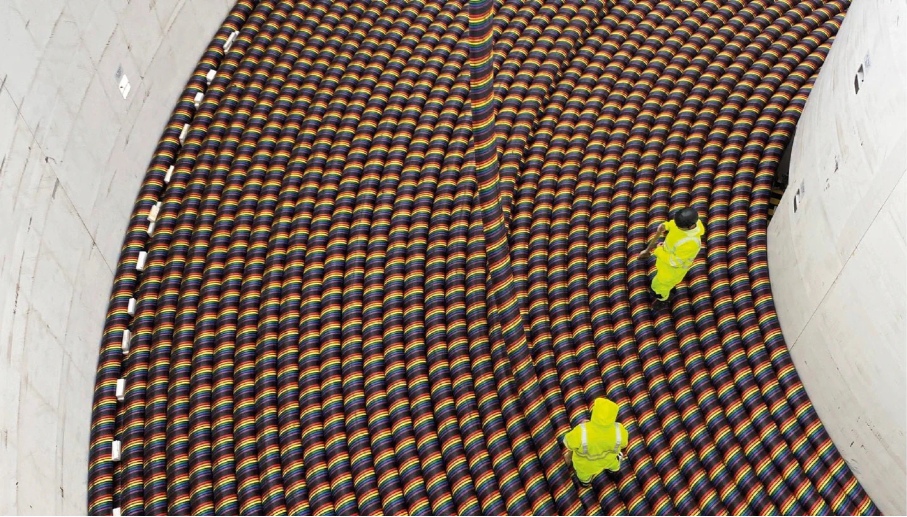 In this photo, 66 kilometres of offshore export cable are seen being precisely loaded on the NKT Victoria vessel to avoid any accidental damage. The export cable system, which consists of 390km of subsea export cable, transfers the power generated by our wind farm from the offshore substation to landfall at Horseshoe Point via the reactive compensation station.
In this photo, 66 kilometres of offshore export cable are seen being precisely loaded on the NKT Victoria vessel to avoid any accidental damage. The export cable system, which consists of 390km of subsea export cable, transfers the power generated by our wind farm from the offshore substation to landfall at Horseshoe Point via the reactive compensation station.
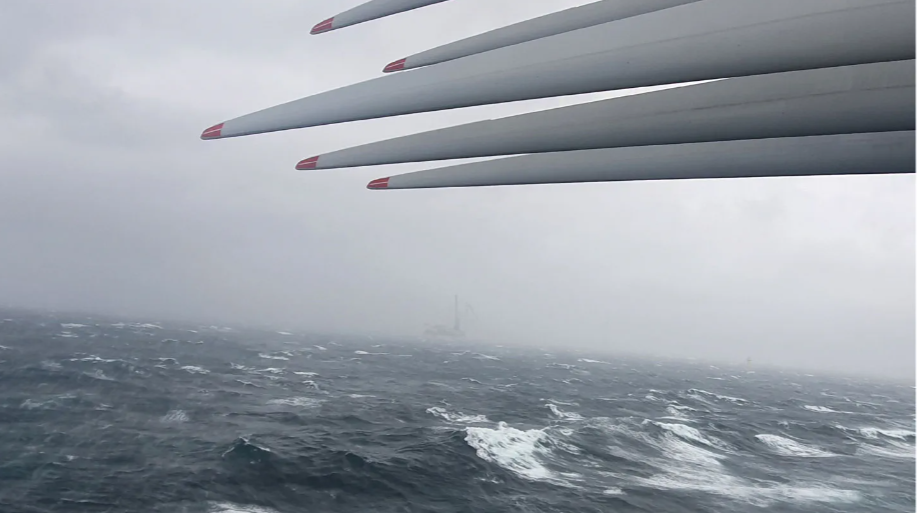 Weather conditions can make working offshore extremely challenging, and on Hornsea 2 we’ve had it all. From high wind, rough seas and snow to dense fogs and driving rain, our offshore teams are always at the mercy of the elements.
Weather conditions can make working offshore extremely challenging, and on Hornsea 2 we’ve had it all. From high wind, rough seas and snow to dense fogs and driving rain, our offshore teams are always at the mercy of the elements.
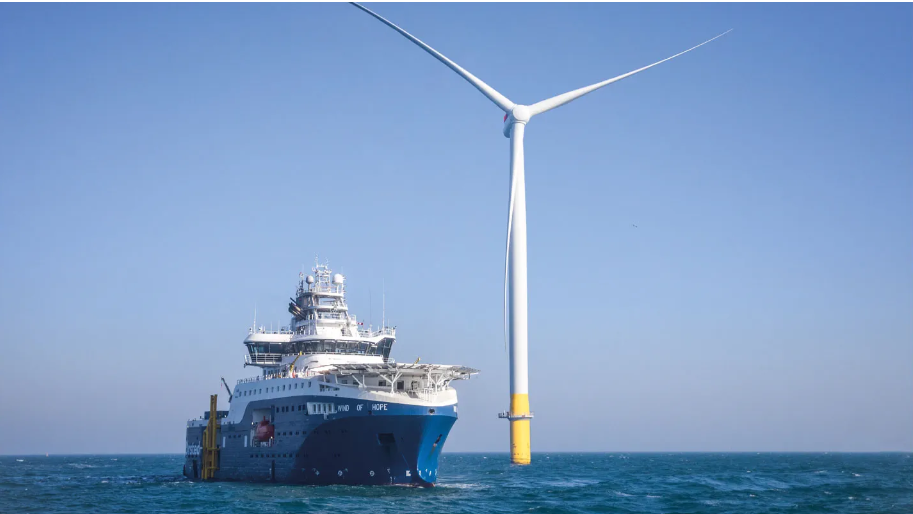 Ørsted’s Wind of Hope Service Operations Vessel in the field. Built to support both Hornsea 2 and Hornsea 1, the Wind of Hope provides high quality accommodation for up to 60 wind turbine technicians working offshore. Facilities include a gym, hospital, and cinema.
Ørsted’s Wind of Hope Service Operations Vessel in the field. Built to support both Hornsea 2 and Hornsea 1, the Wind of Hope provides high quality accommodation for up to 60 wind turbine technicians working offshore. Facilities include a gym, hospital, and cinema.
Overcoming challenges – together
About half-way through the project, the Covid-19 pandemic hit.
With teams in Asia, we saw the pandemic coming and set controls in place well in advance. As a result, we were able to safely continue working without interruption in the UK and at most of our global sites.
Singapore, however, was different. Due to restrictions, we had to stop work on the wind farm’s enormous 8,000-ton offshore substation there for five months. Then the special vessel we commissioned to sail the substation from Singapore to the UK broke down and got stuck in the Red Sea, delaying us by another six weeks.
Next, came the omicron variant of the coronavirus in December 2021, complicating construction. Then a month of bad weather in the North Sea in February 2022 delayed the project yet again.
Still, we dealt with every curveball we were thrown.
We overcame every challenge we met because we never measured success by the challenges we had; we measured it by how we overcame them together.
As we hand the baton on to our incredible colleagues on the Operations & Maintenance team who will keep Hornsea 2’s turbines spinning for the next 25 years, it’s amazing to look back at what we’ve achieved.
Our incredible team took an audacious idea and brought it to fruition. We managed to build the world’s biggest offshore wind farm in the demanding and unforgiving environment of the North Sea amidst the challenges of a global pandemic. Where there had previously been nothing but open sea, a wind farm will now generate enough clean energy to power over 1.4 million UK homes with low-cost and secure renewable energy.
But the most important achievement of all: We delivered on our shared vision of enriched and injury free people.
“We never measured success by the challenges we had, we measured it by how we overcame them together.”
Patrick Harnett was the Senior Programme Director for Hornsea 2, the world’s largest wind farm. His next project will be leading the construction of Hornsea 3 – an even more ambitious project. With a capacity of 2.8 GW, Hornsea 3 will produce enough renewable electricity to power 3.2 million UK homes.
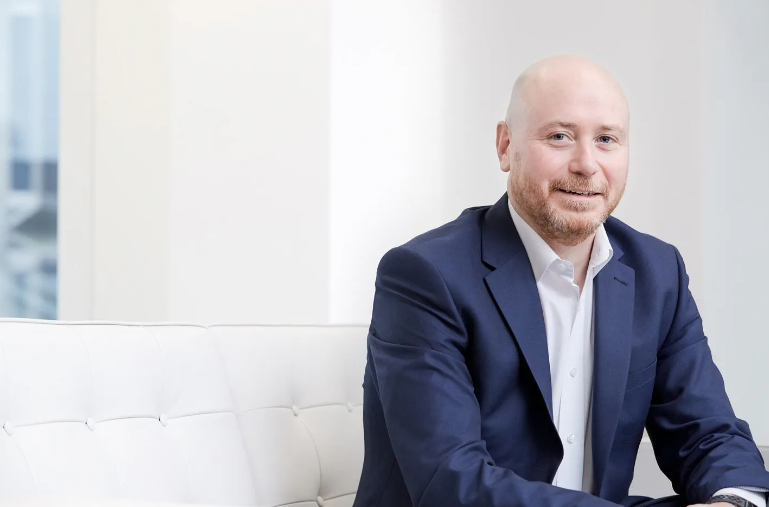

Back to members home page